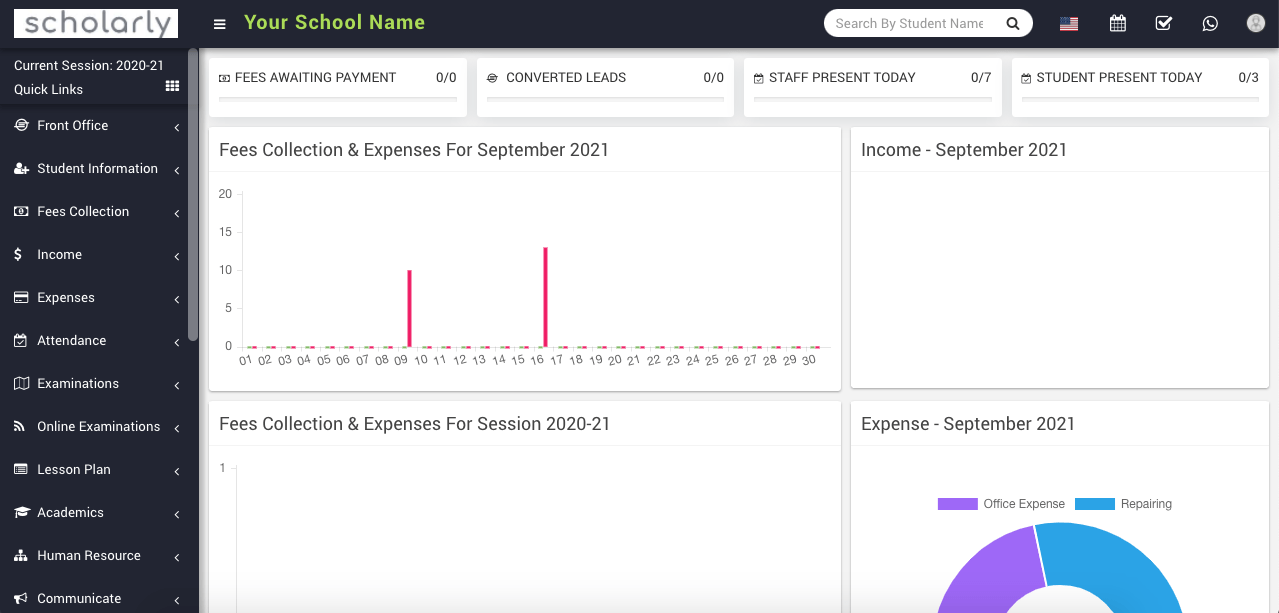In today’s digital age, schools need more than just a traditional pen-and-paper system to efficiently manage their operations. A robust and comprehensive school management system is essential for streamlining administrative tasks, enhancing communication, and improving overall efficiency. But what features should such a system include? In this article, we will explore the 10 key features that every school management system should have.
From student enrollment and attendance tracking to curriculum planning and grade management, a good school management system should cover all aspects of school administration. It should also provide a user-friendly interface that is easy to navigate for both administrators, teachers, and parents. Integration with other systems and applications, such as Learning Management Systems and student information systems, is also crucial for seamless data flow and information sharing.
Moreover, data security is of utmost importance when it comes to managing sensitive student information. A reliable school management system should offer robust data protection measures to ensure the safety and confidentiality of personal data.
In this article, we will delve into each of these features in detail, providing you with valuable insights to help you choose the right school management system for your institution. So, let’s get started and discover the must-have features that will revolutionize your school’s administration process.
Importance of having a school management system
Managing a school involves numerous tasks, from student enrollment and attendance tracking to curriculum planning and grade management. Without an efficient system in place, these tasks can become overwhelming and time-consuming. A school management system provides a centralized platform that automates and integrates these processes, making them easier to manage and more efficient.
A good school management system should also provide a user-friendly interface that is easy to navigate for both administrators, teachers, and parents. This ensures that all stakeholders can access the information they need quickly and easily, resulting in better communication and collaboration.

Key feature #1: Student information management
One of the primary functions of a school management system is to store and manage student information. This includes details such as student names, contact information, enrollment status, and academic records. A comprehensive student information management feature allows administrators to easily access and update this information, ensuring that it is always accurate and up to date.
Additionally, a good student information management feature should also allow for easy enrollment and registration of new students. This could include online forms, document uploads, and automated notification systems to streamline the process and reduce administrative workload.
Key feature #2: Attendance tracking and management
Efficient attendance tracking is crucial for ensuring student safety and monitoring their academic progress. A school management system should have a feature that allows teachers to easily record and track student attendance. This could be done through a mobile app or a web-based interface, providing flexibility and convenience.
Furthermore, an effective attendance management feature should also generate reports and alerts for parents and administrators. This ensures that any attendance issues are addressed promptly and allows for better communication between the school and parents.
Key feature #3: Grade and report card generation
Accurate and timely generation of grades and report cards is essential for tracking student progress and providing feedback to parents. A school management system should have a feature that automates the grading process and generates report cards based on predefined templates.
This feature should also allow for customization, enabling schools to tailor report cards to their specific requirements. Additionally, it should provide a secure platform for sharing report cards with parents, ensuring confidentiality and privacy.
Key feature #4: Timetable and scheduling management
Creating and managing timetables and schedules can be a complex task, especially for larger schools with multiple classes and subjects. A school management system should have a feature that simplifies this process and ensures efficient utilization of resources.
This feature should allow administrators to create and customize timetables based on various parameters, such as class size, teacher availability, and subject requirements. It should also provide a platform for sharing and accessing timetables by teachers, students, and parents.
Key feature #5: Communication and messaging tools
Effective communication is vital for building strong relationships between the school, teachers, students, and parents. A school management system should include communication and messaging tools that facilitate seamless communication.
This feature should allow administrators, teachers, and parents to send messages, notifications, and announcements through various channels, such as email, SMS, or in-app messaging. It should also provide a centralized platform for storing and accessing all communication history, ensuring transparency and accountability.
Key feature #6: Fee management and payment tracking
Managing fees and tracking payments can be a time-consuming task for schools. A school management system should have a feature that automates fee management and payment tracking, simplifying the process and reducing administrative workload.
This feature should allow administrators to create and manage fee structures, generate invoices, and track payments. It should also provide a platform for parents to make online payments, view payment history, and receive payment reminders.
Key feature #7: Library management
A well-managed library is an essential resource for any school. A school management system should have a feature that automates library management, making it easier to organize and track books, manage borrowing and returns, and generate reports.
This feature should allow librarians to catalog books, manage inventory, and track circulation. It should also provide a platform for students and teachers to search for books, reserve copies, and access online resources.
Key feature #8: Staff management and payroll
Efficient staff management is crucial for ensuring smooth school operations. A school management system should have a feature that allows administrators to manage staff details, track attendance, and generate payroll.
This feature should provide a platform for storing and accessing staff information, such as contact details, qualifications, and work history. It should also automate attendance tracking and generate accurate payroll reports, simplifying the payroll process and reducing errors.
Key feature #9: Exam management and result processing
Managing exams and processing results can be a complex and time-consuming task. A school management system should have a feature that automates exam management, including exam scheduling, seating arrangements, and result processing.
This feature should allow administrators to create and manage exam schedules, assign exam centers, and generate seating plans. It should also automate result processing, including grading, calculating averages, and generating reports.
Key feature #10: Data security and backup
Data security is a critical concern when it comes to managing sensitive student information. A reliable school management system should offer robust data protection measures to ensure the safety and confidentiality of personal data.
This feature should include encryption, access controls, and regular data backups to prevent unauthorized access and data loss. It should also comply with relevant data protection regulations, such as GDPR, to ensure legal compliance.
Conclusion
In conclusion, a comprehensive school management system should have a range of features that streamline administrative tasks, enhance communication, and improve overall efficiency. From student information management and attendance tracking to grade generation and data security, these features are essential for modern schools.
By choosing a school management system that includes these key features, schools can revolutionize their administration processes, save time and resources, and provide a better learning environment for students. So, make sure to assess your school’s needs and choose a system that meets your requirements.







